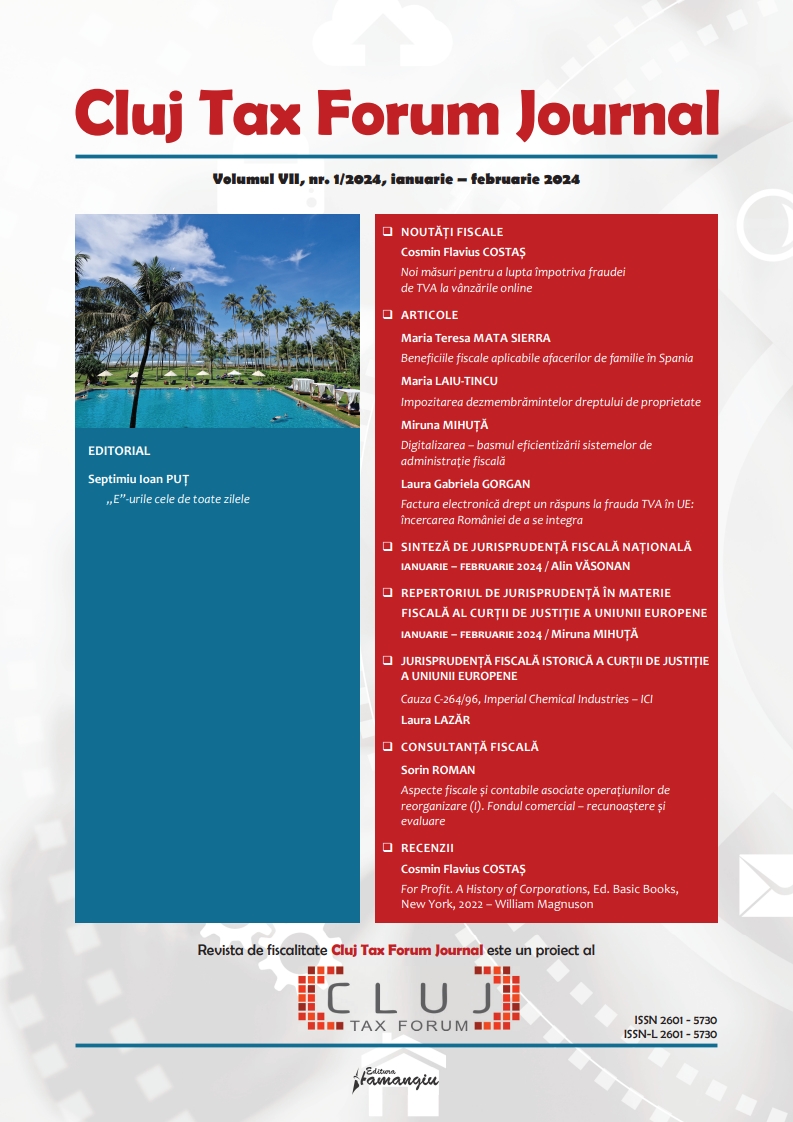DIGITALIZATION – THE OLD WIVES’ TALE OF STREAMLINING TAX ADMINISTRATION SYSTEMS
DIGITALIZATION – THE OLD WIVES’ TALE OF STREAMLINING TAX ADMINISTRATION SYSTEMS
Author(s): Miruna MihuțăSubject(s): Politics / Political Sciences, Law, Constitution, Jurisprudence, Public Administration, Public Law, EU-Legislation, Administrative Law
Published by: Editura Hamangiu S.R.L.
Keywords: digital administration; European tax law; digitalisation; E‑government; human rights; artificial intelligence;
Summary/Abstract: With great power come great responsibilities – this axiom could also be applied to the issue of digitalisation. As time progresses one can easily notice the swift evolution of technology. If three decades ago, technology was solely seen as an accessory for facilitating our lives, nowadays the discussion revolves around its disruptive effects and its potential power that it can possess once it reaches a certain level of autonomy. Nevertheless, as long as it is controlled and well regulated, one cannot deny that it can streamline all sectors of a society, including public administration. In particular, tax administration is known for being extra‑bureaucratic and formal, public servants having to resort to old‑fashioned procedures. However, this constant state of regression cannot withstand the emergence of digital economy. Thus, the European Union has been proactive in encouraging Member States to transform their public systems. In this study, our aim is to determine whether digitalisation can be implemented in a hassle‑free manner, without raising issues in regard to the traditional principles of European tax law and human rights. We approach it from a bilateral perspective, from both the taxpayer’s point of view and also from the point of view of the tax authorities. In the introductory Part (1) of the article, we will offer a brief history of the European Union’s incentives in improving digitalisation among public administration systems. In the second part (2), we will focus on the current state of European Member States and to what extent their tax administration systems are digitalised. In the third part (3) we will proceed to analyse what are the advantages and the disadvantages a systematic digitalisation could incur for taxpayers. Last but not least, the fourth part (4) will shift the focus to tax administrations.
Journal: Cluj Tax Forum
- Issue Year: VII/2024
- Issue No: 1
- Page Range: 32-42
- Page Count: 11
- Language: English
- Content File-PDF

